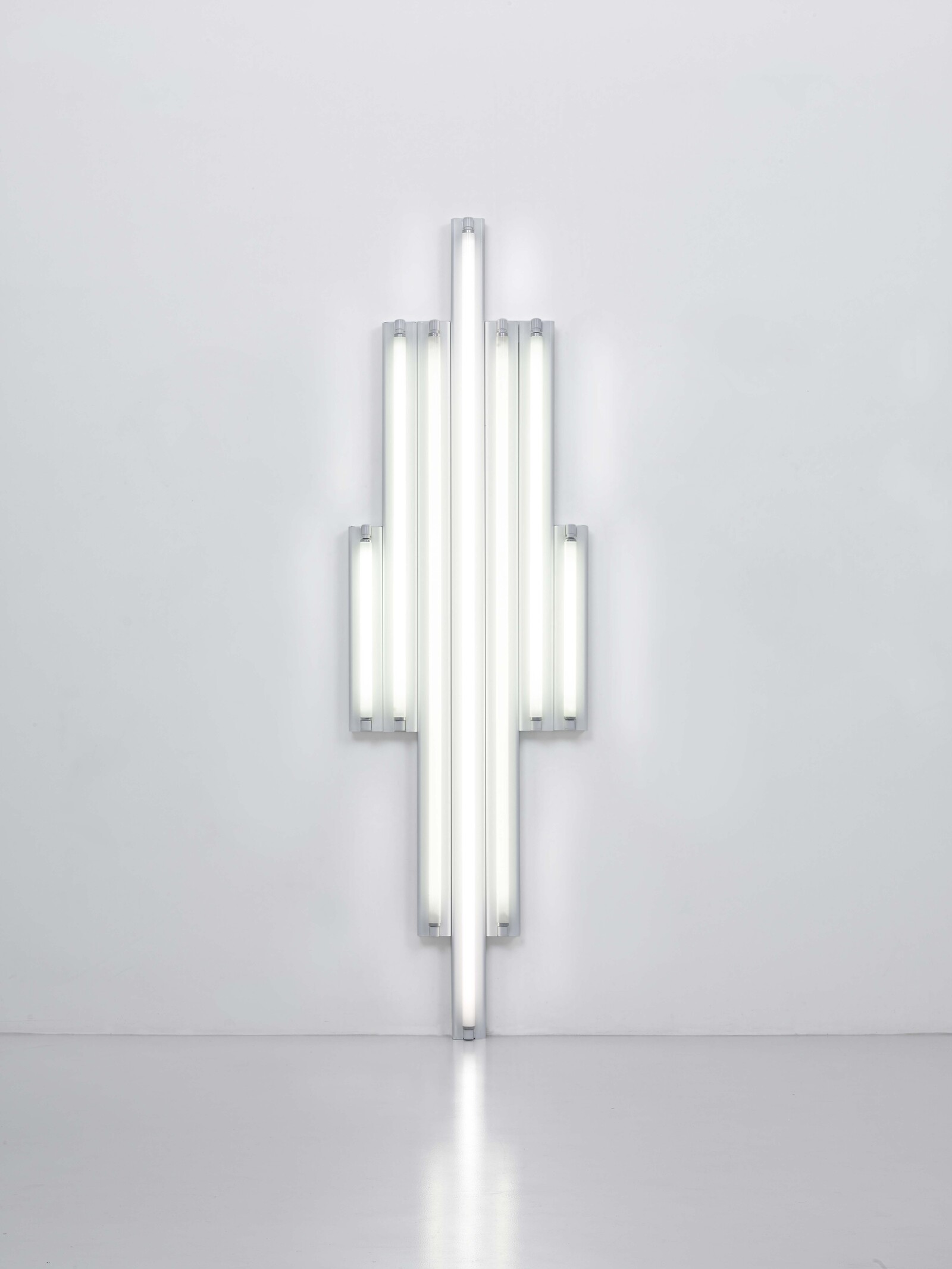February 1–September 3, 2017
Shibuya-ku
Jingumae, 5 Chome−7−5 ルイ・ヴィトン 表参道店 7F
Tokyo 150-0001
Japan
Following Pierre Huyghe’s monographic exhibition, the Espace Louis Vuitton Tokyo honors American artist Dan Flavin and continues its presentation of previously unseen works from the Fondation Louis Vuitton’s permanent collection. This exhibition was conceived and produced under the artistic direction of Fondation Louis Vuitton, as part of its distinguished “Hors-les-murs” program, displayed in the Espaces culturels Louis Vuitton throughout the world, in Tokyo, Munich, Venice and Beijing.
Dan Flavin first used light between 1961 and 1963, with his “Icons” series—eight square canvasses with electric and fluorescent bulbs attached—leading to the “epiphany” moment in his career when he created The Diagonal of May 25, 1963: a long fluorescent strip with a gold-colored bulb positioned on a wall at a 45-degree angle. From then on, he worked exclusively with pre-fabricated fluorescent tubes that came in four sizes and ten different colors (blue, green, pink, yellow, red, ultraviolet and four shades of white), arranging this limited repertoire without alteration or ornamentation.
Flavin’s work rejects all religious and mystical interpretations of light, expressing itself solely as a reference to its own presence—it is “situational” in nature, focusing on the physical space occupied by the artwork and the viewer’s interaction with it. During the 1960s and ’70s, Flavin began to create more complex configurations such as simple structures, corner installations and his “barred corridors.” The scale of his works increased to inhabit every nook and cranny of the spaces, stretching from floor to ceiling and along walls, picture rails and corridors. At the same time the artist explored different variations and intensities of color, which he adjusted depending on the length, number and arrangement of tubes, placed vertically and horizontally as well as diagonally.
From the 1970s onwards, the architectural settings Flavin worked on became increasingly monumental, leading him to focus on site-specific installations. Throughout his career, Flavin’s highest ambition was to offer sensory experiences of space by transforming it and enriching it using simple interactions of light.
The Espace Louis Vuitton Tokyo showcases seven works of Dan Flavin’s from the Fondation Louis Vuitton collection: Untitled (1963), Alternate Diagonals of March 2 (To Don Judd) (1964), “Monument” for V. Tatlin (1964–65), “Monument” for V. Tatlin (1967), “Monument” for V. Tatlin (1969), “Monument” for V. Tatlin (1970), and Untitled (To Alex and Nikki) (1987), thus paying tribute to the pioneering oeuvre of this iconic artist.
About the artist
Dan Flavin (1933–96) was a leading figure in the Minimalist movement who devoted his life to exploring the medium of light. After rejecting the religious teachings imposed by his father, he studied art history, followed by techniques and materials at Columbia University (New York, USA). In his use of industrial materials, his serial repetition of elementary forms and his refusal of representation, illusion or metaphor, Flavin contributed to the birth of the Minimalist movement alongside Donald Judd, Robert Morris and Sol LeWitt.
About the Fondation Louis Vuitton
The Fondation Louis Vuitton is an institution that serves the public interest dedicated exclusively to contemporary art and artists, as well as 20th century works to which their inspirations can be traced. The Fondation’s own collection and the exhibitions it organizes seek to engage a broad public. The building created by architect Frank Gehry constitutes the seminal artistic statement by the Fondation. This building is already recognized as an emblematic example of 21st century architecture. The Fondation Louis Vuitton has welcomed more than a million visitors per year since its opening in October 2014, from France and around the world.
From its opening in Paris, the Fondation Louis Vuitton announced that it would engage in international initiatives, both at the Fondation and in partnership with public and private institutions, including other foundations and museums. The Fondation is also responsible for the artistic direction of a specific “Hors-les-murs” program within its cultural spaces in Munich, Venice, Beijing and Tokyo, which are exclusively devoted to exhibitions of works from its collection. The exhibitions they organize are open to the public free of charge, and their programs are promoted through specific cultural communication.



